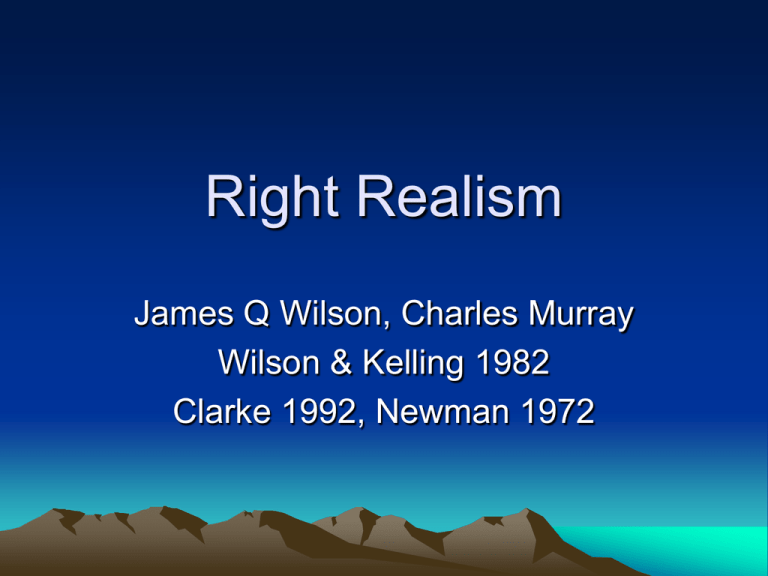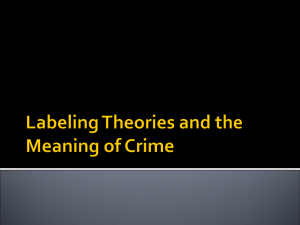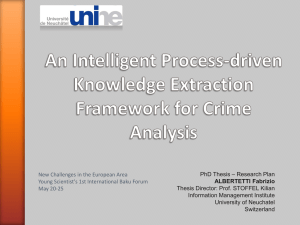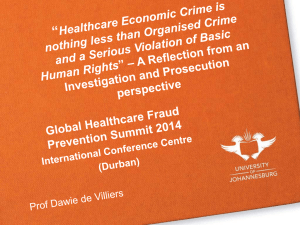Realist Theories
advertisement

Right Realism James Q Wilson, Charles Murray Wilson & Kelling 1982 Clarke 1992, Newman 1972 Right Realism and Rational Choice • Right realism is based on the right wing view that criminals have made a rational choice to break the law. • People are not forced to become criminals – they have chosen to break the law. • The role of the government is not to eliminate “mythical root causes of crime” such as poverty, but to punish the criminal. • Humans are naturally selfish and greedy – if people receive poor socialisation then crime will be the result • Crime can never be eliminated, merely reduced. Zero tolerance policies • James Q Wilson developed zero tolerance policies whilst working as an advisor to President Reagan in the 1980s but his views were also influential to the British government of that time. • This policy is based on the idea that if small crimes are allowed to go unchallenged then this leads to more serious crimes being committed • Notes on Zero Tolerance “Broken Windows” Theory Wilson & Kelling 1982 • High levels of crime occur where informal social control over anti-social behaviour has broken down • If low level anti-social behaviour is prevented then this does not escalate to serious crimes being committed. • Analogy of an abandoned building – once one window gets broken – then all the windows soon get smashed. Situational Crime Prevention • Clarke 1992 advocates policies and practices which make it difficult for crime to be committed. • People will commit offences when the benefits of offending outweigh the costs. • Newman 1972 introduced the idea of “defensible space” – the design of streets and houses could make them safer. • “Target Hardening” – improving security, CCTV Evaluation of crime prevention theories • Garland (2001) argues that situational crime prevention policies merely limits the extent and impact of crime and ignores the underlying causes of crime • Crime Displacement – crime merely shifts to a less well monitored area or the type of crime may change • Alongside crime prevention other actions must be considered such as Early Intervention programmes and programmes that involve the communities involved • Take notes from pages 392 & 393 in the text book • Read handout on Perspective from the Right and answer summary questions











